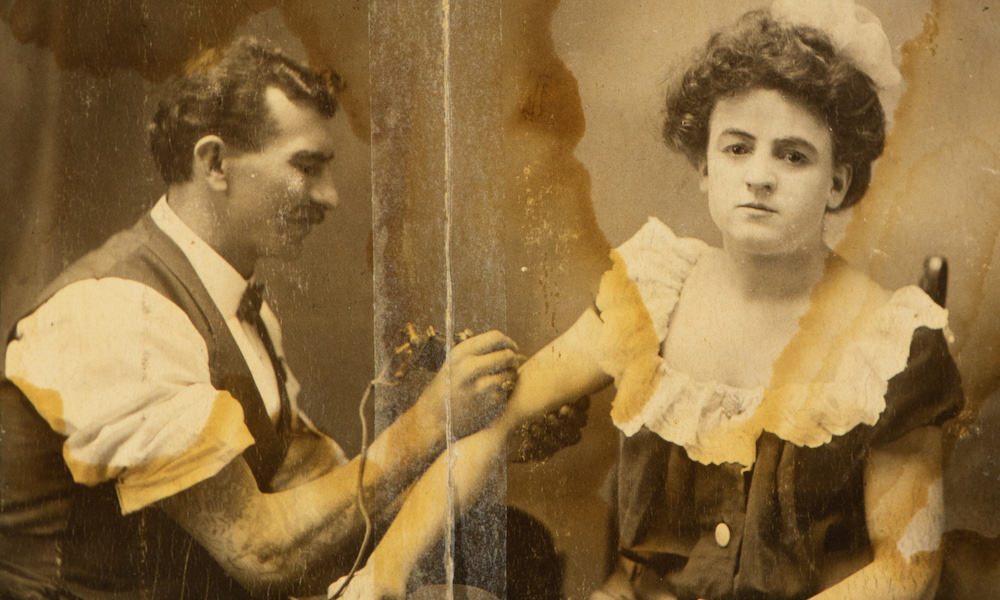These days, it seems like tattoos are everywhere, but the question remains: where exactly did they come from, and how did they get to where they are today? Tattoo Uprising is a new feature-length documentary that sets out to answer that question. Like a collection of tattoos on a person’s body, the film is patchwork quilt of a movie combining photos, sound bites, film clips, and video tidbits, all in an effort to chart the trajectory of tattoos throughout history and into modern society.
Spoiler alert. Filmmaker Alan Govenar first became interested in tattoos when taking a folklore class in college. To fulfill course requirements, he found himself wandering into Leonard “Stoney” St. Clair’s tattoo shop. “This was, for me, at that time, like being in the middle of a Franz Kafka novel,” says Govenar in the film. For the filmmaker, going to St. Clair’s shop became a weekly ritual for over five years, and meetings with the feisty tattoo master evolved into a book and short film, Stoney Knows How, shot by legendary filmmaker Les Blank.
Gus Wagner tattoos his wife, Maude, in St. Louis, Missouri, February 1904/ Courtesy of Documentary ArtsAs Governor completed the short documentary in 1980, he set out to assemble a larger story that would include even more luminaries of the tattoo industry. The result is Tattoo Uprising, which even features a cameo by Werner Herzog, who came into the picture as Blank shot Burden of Dreams while Herzog himself filmed Fitzcarraldo. In Tattoo Uprising, Herzog recounts how he went to San Francisco and visited Ed Hardy, a “strange but very intriguing” man who tattooed Herzog with a black-and-white image of death laughing. Herzog goes on to make the case for why tattooing is a true art: “It has to do with ritual. It’ …
Read More
Author: Tanja M. Laden / High Times








